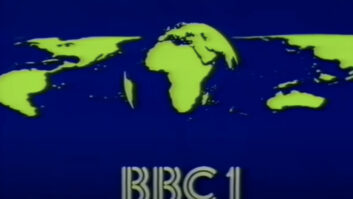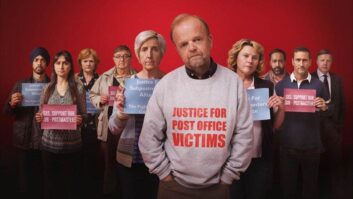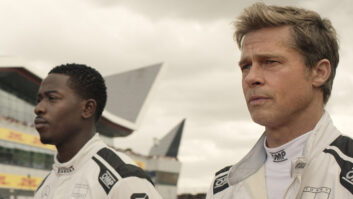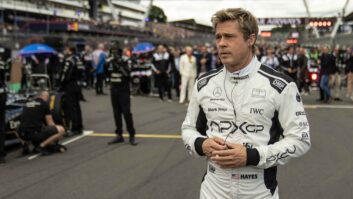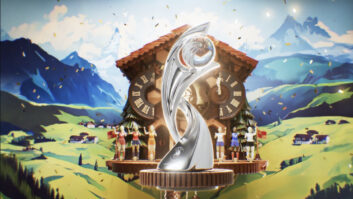Michelle, can you begin by telling us how you got started in the TV/film industry?
Well, I guess it started in high school at Whitney Young in Chicago. I was super into theatre, and we had this little TV studio in the back of the theatre. My friends and I loved Army of Darkness, so we’d shoot these dumb videos around school with fake swords, running around, and I’d edit them on VHS, deck-to-deck, intercutting our crappy footage with PoV shots from the movie. That’s where I got hooked on editing. Then I took a summer class at Columbia College Chicago, working on a splicer—super basic, not even a Steenbeck. Someone said, “Wow, this is really well edited,” and I was like, “What’s that mean?” I just put it together, you know?
In that class, I was the youngest, and I met a kid heading to NYU, which put film school on my radar. I didn’t get into NYU at first, so I went to the University of Illinois for two years, studied English Lit, took art classes, which was honestly great. Then I applied as a transfer to NYU, got in, and started editing projects for people there. That’s how it all kicked off.
How did you get involved with Dept Q?
This is my fourth time working with Scott Frank, the writer, director, and producer. He called me early in 2023 while I was still on Maestro, saying, “We might do a couple episodes of this show.” I was like, “Cool.” But, you know, projects shift. The writers’ strike hit, so Scott had to stop writing until the strike was over. Once it cleared, he got super into it, rewriting scripts, even though other writers had done drafts. My Netflix post production contact, Mick Aniceto, was like, “Be ready, you might end up cutting all of these.” I said, “No, Scott said just one and two.” But sure enough, Scott got obsessed and asked me to edit every episode. That’s how I got roped in.
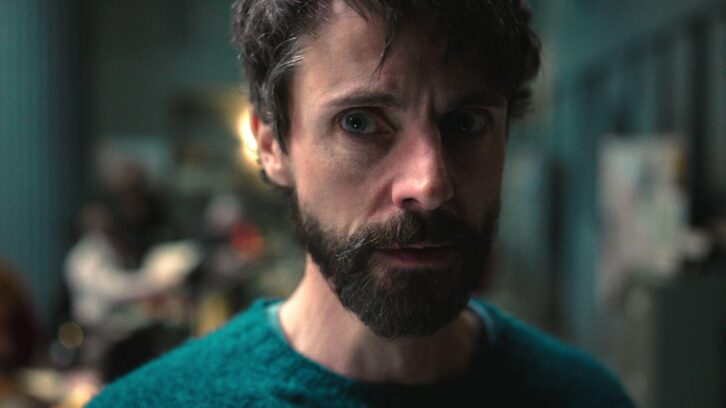
Did you edit during production, or after the show wrapped?
I started a bit before production, reading scripts, talking with Scott and the producers, crewing up. Then I edited all through production and kept going after it wrapped. The editing team was on this for a year and three months—editorial is usually on a project the longest out of the crew—it’s a marathon.
What were your aims as you were editing the show?
We wanted to set up these characters so you’d fall in love with them and want to keep watching them season after season. Scott’s writing nails that. For this season, it was about solving Merritt Lingard’s case—both Carl [Matthew Good’s character] and the team figuring it out and Merritt herself piecing together why she’s in this mess. We aimed to keep those two investigations parallel, so Carl and Merritt feel like they’re on the same page as the season builds.
How did you ratchet up the suspense as the series progressed?
It’s not a whodunit; it’s a “why did the who do it?” We knew the kidnappers were talking to Merritt, so the suspense was about why she’s there. With Merritt’s storyline, since she’s in that chamber and barely changes clothes, we could move her scenes around to match the investigative team’s progress. We shot most of her stuff at once, so I could intercut it to build tension, paralleling Carl’s investigation with her trying to figure out, “Why am I here?” That back-and-forth kept it gripping.
Can you talk us through which editing solution you use on the show and why you like working with it?
We used Avid, which is my standard—it’s solid for big projects. But the cool thing was using Hireworks boxes, remote hard drives that sync to a server. I was in LA, my assistant Charlie Greene was in New York, and we had two UK assistants—one in Surrey (TW Leshner), one in Glasgow (Mark Fraser). We all worked remotely, and those boxes made it seamless.
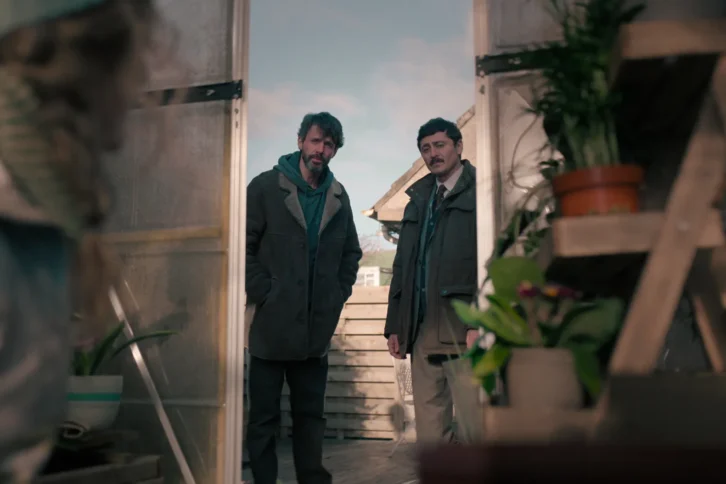
Do any of you have a particular tool that makes your life easier during the edit?
Honestly, my biggest tool was scene cards—analogue, but essential. Merritt’s chamber scenes, flashbacks, all that was getting moved across episodes. No way could I do that just staring at a timeline. I’d be in my hallway at 5am, in PJs, with cards spread out, on a video call with Scott in New York and Rob Bullock, our exec producer, in London. We’d move cards around to restructure the show. It’s like, if we were in person, we’d be in a room doing the same thing. Scene cards were essential.
Were you able to edit it all on-prem (and where was that), or did you work remotely?
Totally remote. I did go to the set twice—once to meet everyone, because people respond better to emails when they’ve seen your face, and once to edit with Elisa Amoruso, the other director. That was key since English isn’t her first language, and she was struggling with Scott’s flowery dialogue and Scottish accents.
How collaborative were the show’s director(s) in the edit?
Scott’s super collaborative. We’ve been at it since 2014, and he’s leaned on me more each time—probably to his detriment, he’d joke. I get early scripts, we talk from the start, and I usually go to set once or twice. With Elisa Amoruso, it was also great teamwork. We worked closely, especially when I was out there for three weeks. We’d show cuts to Scott, discuss as a group, and keep refining. It’s all very open and team-driven.
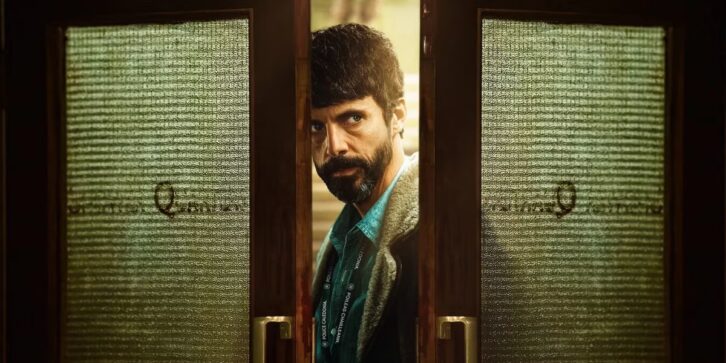
Can you talk us through your editing process?
I didn’t really cut episodes one by one; it was like one giant movie. We worked in blocks—1-2, 3-5, 6-8, and that extra ninth episode—over 15 months. Early on, we’d get 8 or 9 takes per scene because Scott and the crew were finding their groove. Later, they knew what they needed, so it dropped to fewer takes, depending on the scene. It varied, but we had enough to work with.
I start by reading scripts and chatting with Scott and the producers before shooting. Then I cut as we get footage, working in blocks since they shot episodes together. I assemble 20-minute sequences in reels, share with the director, and tweak as we go, using scene cards to move stuff around, especially with Merritt’s scenes. Scott, Elisa, and Rob would weigh in, and we’d keep shaping it together. We would also share reels with the sound designers/editors (Wylie Stateman and Joe Beal), our music editor (Tom Kramer), and of course our composer (Carlos Rafael Rivera). We working in a rolling mix.
What is the biggest challenge of working on Dept Q?
The story structure, hands down. Scott was writing as we shot, which isn’t his norm. Usually, he’s got everything written, and the crew knows the plan. Here, he kept changing plot points and locations, so by the end of shooting, he wasn’t sure we had everything. I wasn’t either until I cut it all together. We had to figure out, “Okay, what’s the story? Where are the holes?” That’s when we leaned hard on scene cards to restructure, which was a beast but got us there.
Do you each have a favourite scene or episode that you’ve worked on?
Man, that’s tough. While I can’t narrow down a favourite scene, I love Akram and Rose—their scenes were so fun to cut. We had this running joke that Scott put people from his life into the show. Like, the physical therapist Dr. Loo is his producer, Susan Hsu, his assistant of 20 years. Scott is obviously Carl, but as for the rest, who’s who? Scott said, Rob, the exec producer was Rose, and I am Akram. That made me look at that character and myself in a different light!


